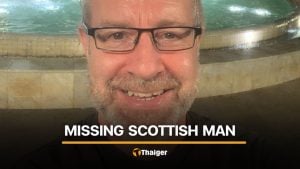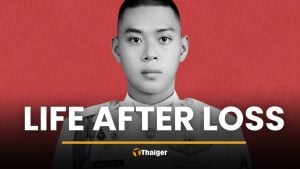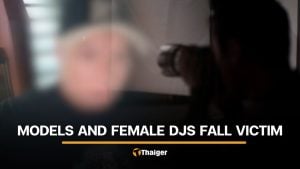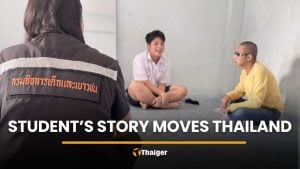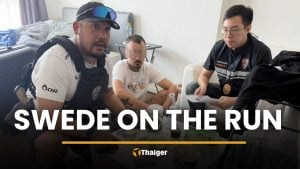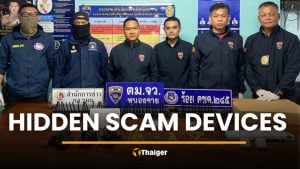Well-being: Phuket expert shows how to ‘unwind from the core’
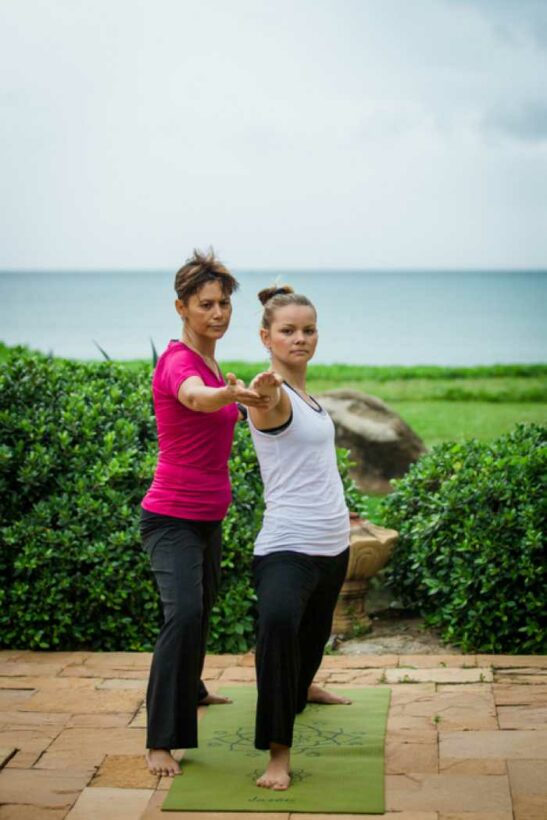
PHUKET: Pat Thummanond, of Scottish-Thai heritage, faced a tough decision at the young age of 17. It was the big question that she and all of her classmates in Scotland had to answer before they walked out the doors of their high school for the last time: What do I want to be when I grow up?
For Pat, the answer was easy. She wanted to be a doctor. However, there was just one tiny hiccup in her life plan.
“I was not a straight-A student, so being a doctor was out of the question,” she says.
The painful solution to Pat’s conundrum did not become clear until she suffered a sport injury, a twisted knee, which put her in a full-leg cast for six weeks.
“When I came out of the cast, I went to physiotherapy. That’s when the light bulb went on. I thought, ‘Ah, combine sports and medicine and you get physiotherapy’,” explained the energetic 53-year-old.
“And that was it. That’s where it all began.”
Core-unwinding
Pat, a physiotherapist and the only certified cranio-sacral therapist in Thailand, has studied on three different continents and treats people all over the world, bringing her “touch” with her wherever she goes.
During Pat’s final internship as a physiotherapist student, her last patient was a spinal-cord injured
 Pat Thummanond is a fully certified physiotherapist, and the only certified cranio-sacral therapist in Thailand. Photo: Supplied
Pat Thummanond is a fully certified physiotherapist, and the only certified cranio-sacral therapist in Thailand. Photo: Supplied18-year-old boy.
“The thought in my head then was, ‘I wonder what it would be like to be with someone from the time of their accident to their full rehab potential’,” she says.
Pat got her wish about three months later, when she was visiting a family in California. She and one member of the family got into a serious accident that left the family member with three fractured cervical vertebrae. Pat walked away with only minor cuts.
“I resolved to help her until the end of her rehab, learning the trials and tribulations along the way,” Pat says. “I would go visit her in rehab and watch what the physios there were doing for her. I would do family training. Then, when she came home, I was her primary caretaker.”
Pat explains that this experience of healing – which ultimately led to her becoming a registered physiotherapist in California – was just one of many along her professional path.
“I was led to the world of cranio-sacral therapy, visceral manipulation, lymphatic drainage… all the modalities that are subtle and gentle, but deliver a big ‘unwinding’ of the body from the inside out. Thus I coined it ‘core-unwinding’.”
Cranio what?
Cranio-sacral therapy is all about “freeing restricted cranial bones”, Pat explains.
The technique began in the early 1950s, when one osteopath refused to believe that the cranial bones were fused as you mature. This disbelief led to self experiments on how to free up compressed cranial bones in the head. He became the father of cranio-osteopathy.
“Clearing anything that is restricted in the head allows the cerebrospinal fluid to flow properly, from the cranium down to the spinal cord,” she says.
Soon the technique expanded to the entire body, thanks to a Dr Upledger, who expanded the treatment to include the fascia – connective tissue – and all the membrane systems. Then, the therapists were able to access the inside of the body from the outside.
Pat uses her touch to detect where tension resides inside the body. And she gets specific, pinpointing exactly which parts of your body need more attention and treatment. It seems oddly simple: she just places her hand on top of your head, and allows the body to guide her to the problem areas.
When I experienced this healing therapy during a retreat at JW Marriott Phuket, where Pat was a visiting practitioner, Pat stated – correctly – that I had been in a car accident and suffered mild whiplash. She then told me what I needed to do to facilitate healing in my upper back and sent me on my way.
“My explanation is very simple. My intention [when I assess someone] is to let the body tell me what is tight, what is restricted and what is not flowing on the inside. My job is to go to these areas and release them the best I can. Without restrictions, the body will self-correct. That’s it,” Pat says.
“I am usually able to complete the whole body in two sessions. It is like a peeling away most of the tension. A session or two twice or three times a year will be like pressing a reset button on your computer – it throws out all the junk the body doesn’t need anymore.”
The most powerful tools
After spending 20 years in the United States, Pat says that her soul brought her home to Thailand with the desire to “spread the touch”, treating and teaching those who wished to be touched deeply.
This touch, combined with body listening, forms a tool more powerful than any machine used in conventional medicine, says Pat.
“Our hands can detect tension inside the tissues much faster than a machine can. A lot of times, the machines are not calibrated – not designed – to detect restrictions in the fascial layers. Note that I have not come across any machine that can do that,” she says.
“As a result, your body has to go through a horrendous amount of changes before a machine can pick up on it. For instance, your liver has to be at least 50 per cent dysfunctional before the liver function test tells you that you have a problem, whereas the hand can detect restriction and tension when the problem may only be at 25 per cent.”
The power of healing hands became ever-more clear to Pat when she was going through advanced cranio-sacral training – at the same time as a devastating breakup.
“The class was in really beautiful surroundings, right on the edge of a cliff, with natural springs. In the class, we literally worked on each other. There were two tables, each had a group of five. One lies on the table while the other four work on your body.
“We kept changing and switching, all day and all night. Sometimes we didn’t end until midnight. It was pretty intense. Imagine having eight hands touching your body for hours on end,” she laughs.
The first day, Pat says she was devastated. But by the fourth, she was a new person with a new perspective on life.
“Having eight hands on you for hours on end brings out all kinds of issues, all kinds of emotions. It’s the bringing it out from different parts of the body that is so effective. You’re peeling away something and just letting it all come out,” she says.
Advice for the desk jockeys
In case you can’t wrangle four sets of well-trained hands to help work out your issues, Pat has some expert advice on how to tackle what she believes is one of the most serious problems which affects our health: stress.
For Pat, it’s meditation, yoga and walking her dogs on the beach.
“People forget the power of nature and how we are actually so dependent on nature to balance us. Our body takes on electrons from the ground and the earth, and those electrons balance out the free radicals inside of our bodies,” she says.
“I have realized that you get recharged very fast if you are in nature, if your bare feet touch the ground. You can get super-charged in half an hour.”
For the desk jockeys, like myself, Pat has a few golden rules. First: buy a timer.
“Set it for every half an hour, and every time it goes off say, ‘I’m going to move my spine,'” she says.
Also, be sure to have a regular exercise routine – and stick to it.
“Make a Plan A, Plan B and Plan C. If you cannot make it to the gym three times a week, say to yourself , ‘Okay, when I get home, I am going to give my body half an hour to express itself. It will tell me whether I need to stretch, meditate or whether I need to go for a walk around the block,'” she explains.
Half an hour for yourself, Pat urges; no phone, no television, no distractions.
Turn everything off, and follow your body’s needs.
Latest Thailand News
Follow The Thaiger on Google News:


